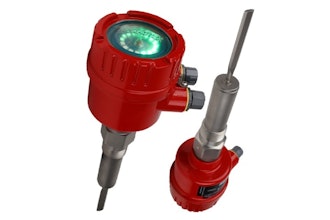I am not an idiot. At least I have friends who tell me I’m not. But I still make mistakes. And I’m not the only one.
In our workshops, participants are shown a 60-second video during which they are asked to count the number of times two soccer balls are passed between a group of people. At the end of the video, opinions usually vary about the number of times the ball was passed. We also ask if anyone saw anything unusual in the video. About 20 percent of viewers admit to having seen a gorilla. Everyone else snickers and wags their heads in disbelief that their fellow participants could be so mistaken. But as we watch the video a second time, everyone clearly sees a person dressed in a gorilla costume slowly walk into the scene, stop, face the camera, and beat his chest before walking out of the scene. Those who did not see the gorilla during the first viewing sit gap-jawed upon realizing that they missed it altogether. The purpose of the exercise is then explained: Humans are not very good at noticing things. We can be fooled - our eyes can deceive us. Optical illusions work for a reason. Humans are not good at inspection. We often miss large things (like a gorilla) when we are focused on anything else. You can try this exercise yourself: Go to the previous two paragraphs and look for a defect, represented by the letter F. Count the number of times the letter F - upper- and lower-case - appears. How many did you count? Most people will miss about half of them. There are actually 13 Fs in the paragraphs. What does this prove? It proves that you could have 100 inspectors inspecting 100 percent of your product and still not be guaranteed 100 percent accuracy. No amount of human inspection will eliminate defects because humans are poor inspectors. Therefore, it makes sense that industrial manufacturers work to eliminate the potential for defects rather than focus on finding defects.To eliminate potential accidents and mistakes, we must first “human-proof” our processes. Airlines, medical operations and other industries have done this by incorporating mistake-proofing techniques into their processes, often following the Japanese system known as “poka-yoke” (pronounced poh-kah yoh-kay). Japanese manufacturing engineer Shigeo Shingo developed poka-yoke as a way to produce zero defective products.
A key component of his Zero Quality Control (ZQC) system, poka-yoke literally means to avoid (yokeru) inadvertent errors (poka). The system relies on eliminating opportunities for mistakes through process change or through the use of devices - reminders, warnings, sensors - that detect or prevent defects from occurring. In the poka-yoke system, there are six primary potential causes for any effect. Each begins with the letter “M” as a memory aid. They are: Manpower, Method, Materials, Mother-Nature (the environment), Management (information) and Machines.|
A worker at a Suzuki plant in Rome, GA, uses a torque wrench to tighten a bolt on an all-terrain vehicle. The green light (on wrench) is a poke-yoke example. When lit, it shows proper torque has been achieved. |
A key architect of the Toyota Production System, Shingo wrote about his discovery and development of mistake-proofing in Zero Quality Control, Source Inspection and the Poka-Yoke System. This book details seven stages of understanding Shingo encountered that led him to conclude that traditional quality-control techniques can only detect a defect after it is generated.
The stages led Shingo from traditional statistical quality control methods (1) to initial experiments with poka-yoke (2), encounters with successive- or self-checking, now referred to as next-operator verification (3), the realization that sampling inspections only rationalize inspection procedures (4), his encounter with source inspection that is built into the process (5), the demonstrable ability to achieve zero defects month after month (6), and finally, establishment of Zero Quality Control (7). This stage acknowledges that automated source inspection for 100 percent of production will minimize time needed to discover and remedy mistakes.Based on the first rule of kaizen, which says you must understand the process, the first step in poka-yoke is to conduct a quality mapping event. Quality mapping is similar to value-stream mapping, which documents the current state of information and material flow through both the administrative and manufacturing processes. But quality mapping differs in that operator cycle times or set-up times are not measured. Instead, variables in the process are documented. At each step in the process, potential defects must be identified.
• What specification is used to determine correct output?
• How is output inspected?
• How often is output inspected?
• What are the defect potentials at each step?
• What are the potential causes of each of these defect types?
• How could these defect potentials be eliminated? As team members collect data, they may determine likely candidates for further observation. They may also begin brainstorming ideas for possible poka-yoke devices or defect-prevention techniques. For example, in one recent poka-yoke project, a team identified a common defect related to the installation of circuit-board “stand-offs.” This is a double-ended piece of hardware which allowed a circuit board to be installed a set distance from the computer chassis. One operator was responsible for installing stand-offs, usually in sets of four. However, the stand-offs were made in two different sizes. Without checks, operators would inevitably mix the hardware or install it in the wrong place. The team examined the process and determined that this variable was likely to create the need for rework, so they separated one set of stand-offs, reassigning this portion of the standard work to a different assembly operator. This eliminated one process variable. It also fulfilled a poka-yoke requirement by restructuring the process so that it would be impossible for the stand-offs to be mismatched. By implementing this and other simple changes, the group lowered its “defects per million opportunities” from 24,000 to 2,400, saving an estimated $400,000 per year in service and reclaim costs. Other examples of poka-yoke abound. Machine shops often design locating pins or blocking devices into a die, for example, or lockout mechanisms into tools, preventing operators from inserting parts upside down, backwards or in the wrong sequence. Similarly, the dead-man switch, used in many industrial machine operations, prevents an action from taking place without having hands or, sometimes, feet, occupied by a button or pedal on the machine. And when automobile manufacturers began designing cars to burn unleaded fuel, they implemented a poka-yoke device into the car. In order to eliminate the chance that leaded gas could be pumped into a car meant to burn unleaded, they changed the orifice size. Fuel companies adapted the size of the nozzle as well. Poka-yoke examples are also found in everyday life. Everyone has heard stories about surgeons replacing the wrong knee or performing surgery on the wrong leg. Mistakes like this can be essentially eliminated by writing “NO” (or some other impossible-to-misinterpret signal) in bold fashion on the leg or knee not requiring attention. Similarly, videotapes and computer disks have a built in poka-yoke device:


















